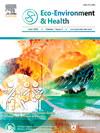Multidimensional patterns of bird diversity and its driving forces in the Yangtze River Basin of China
引用次数: 0
Abstract
Biodiversity is fundamental to human well-being and economic development. The Yangtze River, the largest river in China, faces biodiversity loss due to habitat degradation, climate change, and other anthropogenic threats. However, the long-term changes in the region's biodiversity remain poorly understood. Here, we constructed an optimized living planet index (LPIO) by combining Partial Least Squares Structural Equation Modeling and Random Forest Modeling. Using data from a monitoring network of 536 sites, we observed an increasing trend in terrestrial bird diversity and functional complexity across the entire watershed from 2011 to 2020. Our findings indicate that a large-scale ecological restoration program has contributed to increases in terrestrial and aquatic bird diversity in the Yangtze River Basin. In contrast, bird diversity in the downstream area has decreased by 2.83%, largely due to a rapid decline in wetland birds. The degradation of wetland habitats and insufficient conservation measures have negatively impacted bird diversity in the downstream region. This suggests that although there have been significant improvements in terrestrial bird diversity, more effective wetland restoration is necessary for biodiversity conservation. We recommend optimizing the national large-scale biodiversity monitoring network and increasing the number of upstream monitoring sites.

长江流域鸟类多样性的多维格局及其驱动力
生物多样性对人类福祉和经济发展至关重要。由于栖息地退化、气候变化和其他人为威胁,中国最大的河流长江正面临生物多样性的丧失。然而,人们对该地区生物多样性的长期变化仍然知之甚少。本文采用偏最小二乘结构方程模型和随机森林模型相结合的方法,构建了优化的生命星球指数(LPIO)。利用536个站点的监测数据,我们观察到2011 - 2020年整个流域陆鸟多样性和功能复杂性呈增加趋势。研究结果表明,大规模的生态恢复对长江流域陆鸟和水鸟多样性的增加有一定的促进作用。而下游地区鸟类多样性下降了2.83%,主要原因是湿地鸟类数量迅速减少。湿地生境的退化和保护措施的不足对下游地区的鸟类多样性造成了负面影响。这表明,虽然陆鸟的多样性已经有了明显的改善,但更有效的湿地恢复是保护生物多样性的必要条件。建议优化国家大型生物多样性监测网络,增加上游监测点数量。
本文章由计算机程序翻译,如有差异,请以英文原文为准。
求助全文
约1分钟内获得全文
求助全文
来源期刊

Eco-Environment & Health
环境科学与生态学-生态、环境与健康
CiteScore
11.00
自引率
0.00%
发文量
18
审稿时长
22 days
期刊介绍:
Eco-Environment & Health (EEH) is an international and multidisciplinary peer-reviewed journal designed for publications on the frontiers of the ecology, environment and health as well as their related disciplines. EEH focuses on the concept of “One Health” to promote green and sustainable development, dealing with the interactions among ecology, environment and health, and the underlying mechanisms and interventions. Our mission is to be one of the most important flagship journals in the field of environmental health.
Scopes
EEH covers a variety of research areas, including but not limited to ecology and biodiversity conservation, environmental behaviors and bioprocesses of emerging contaminants, human exposure and health effects, and evaluation, management and regulation of environmental risks. The key topics of EEH include:
1) Ecology and Biodiversity Conservation
Biodiversity
Ecological restoration
Ecological safety
Protected area
2) Environmental and Biological Fate of Emerging Contaminants
Environmental behaviors
Environmental processes
Environmental microbiology
3) Human Exposure and Health Effects
Environmental toxicology
Environmental epidemiology
Environmental health risk
Food safety
4) Evaluation, Management and Regulation of Environmental Risks
Chemical safety
Environmental policy
Health policy
Health economics
Environmental remediation
 求助内容:
求助内容: 应助结果提醒方式:
应助结果提醒方式:


